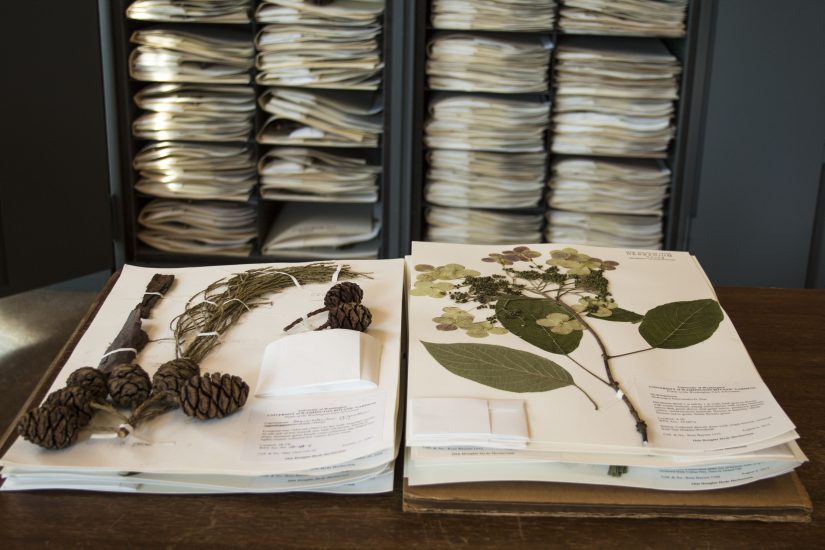
Plants Pressed narrates the power of plants throughout history. Herbaria of pressed plant specimens originally served as pharmaceutical references of potent poisons and healing remedies. Herbarium collections continue to provide scientists vital information about plants in our past and present environments, but they also document and represent a disturbing history that give us insights into the harmful racial divide that persists in the United States today.
The Otis Douglas Hyde Herbarium collects and houses pressed plant specimens from the UW Botanic Gardens and from the research of students, staff and faculty. It is a valuable storehouse of botanical DNA from the Seattle region, the Pacific Northwest and beyond.
Leaflet readers are invited to meet Herbarium Manager Eve Rickenbaker at a reception she is hosting on Friday, September 6, from 5 to 7 pm in the Miller Library. Eve will also speak about the exhibit in the library Thursday, September 26, from 5 to 7 pm.